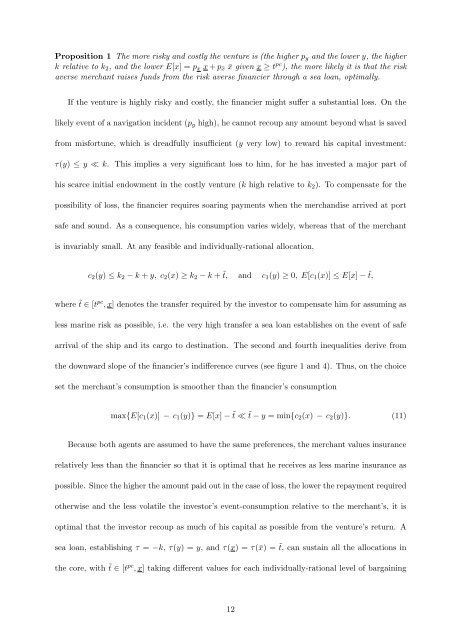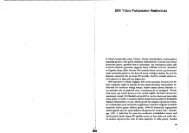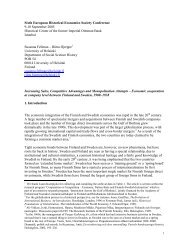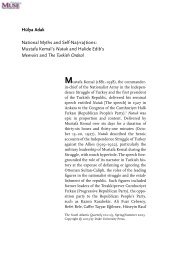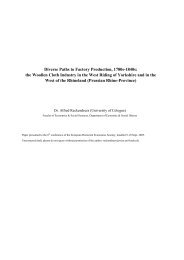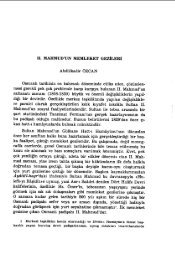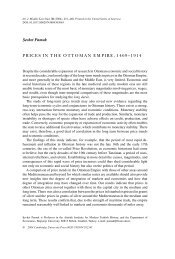The Birth of Insurance Contracts - The Ataturk Institute for Modern ...
The Birth of Insurance Contracts - The Ataturk Institute for Modern ...
The Birth of Insurance Contracts - The Ataturk Institute for Modern ...
You also want an ePaper? Increase the reach of your titles
YUMPU automatically turns print PDFs into web optimized ePapers that Google loves.
Proposition 1 <strong>The</strong> more risky and costly the venture is (the higher py and the lower y, the higher<br />
k relative to k2, and the lower E[x] = px x + p¯x ¯x given x ≥ t pc ), the more likely it is that the risk<br />
averse merchant raises funds from the risk averse financier through a sea loan, optimally.<br />
If the venture is highly risky and costly, the financier might suffer a substantial loss. On the<br />
likely event <strong>of</strong> a navigation incident (py high), he cannot recoup any amount beyond what is saved<br />
from mis<strong>for</strong>tune, which is dreadfully insufficient (y very low) to reward his capital investment:<br />
τ(y) ≤ y ≪ k. This implies a very significant loss to him, <strong>for</strong> he has invested a major part <strong>of</strong><br />
his scarce initial endowment in the costly venture (k high relative to k2). To compensate <strong>for</strong> the<br />
possibility <strong>of</strong> loss, the financier requires soaring payments when the merchandise arrived at port<br />
safe and sound. As a consequence, his consumption varies widely, whereas that <strong>of</strong> the merchant<br />
is invariably small. At any feasible and individually-rational allocation,<br />
c2(y) ≤ k2 − k + y, c2(x) ≥ k2 − k + ˜t, and c1(y) ≥ 0, E[c1(x)] ≤ E[x] − ˜t,<br />
where ˜t ∈ [t pc , x] denotes the transfer required by the investor to compensate him <strong>for</strong> assuming as<br />
less marine risk as possible, i.e. the very high transfer a sea loan establishes on the event <strong>of</strong> safe<br />
arrival <strong>of</strong> the ship and its cargo to destination. <strong>The</strong> second and fourth inequalities derive from<br />
the downward slope <strong>of</strong> the financier’s indifference curves (see figure 1 and 4). Thus, on the choice<br />
set the merchant’s consumption is smoother than the financier’s consumption<br />
max{E[c1(x)] − c1(y)} = E[x] − ˜t ≪ ˜t − y = min{c2(x) − c2(y)}. (11)<br />
Because both agents are assumed to have the same preferences, the merchant values insurance<br />
relatively less than the financier so that it is optimal that he receives as less marine insurance as<br />
possible. Since the higher the amount paid out in the case <strong>of</strong> loss, the lower the repayment required<br />
otherwise and the less volatile the investor’s event-consumption relative to the merchant’s, it is<br />
optimal that the investor recoup as much <strong>of</strong> his capital as possible from the venture’s return. A<br />
sea loan, establishing τ = −k, τ(y) = y, and τ(x) = τ(¯x) = ˜t, can sustain all the allocations in<br />
the core, with ˜t ∈ [t pc , x] taking different values <strong>for</strong> each individually-rational level <strong>of</strong> bargaining<br />
12


